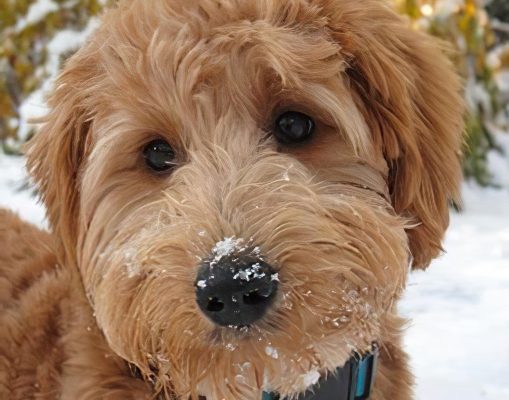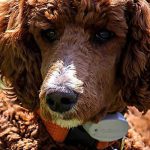Grooming of pedigree dogs is a mandatory procedure, but it is not as simple as it can seem. Those dog owners who choose to groom their pups themselves instead of using the services of professionals, need to have some skills. But it is equally important to have the right grooming kit. Commonly, it includes a clipper with several replaceable blades, scissors, and combs.
Table of Contents:
What is a Dog Clipper Blade and Why It’s Important to Choose the Right Type
Dog Clipper Blade Sizes Chart
Wahl Dog Clipper Blade Sizes
Andis Dog Clipper Blade Sizes
Oster Dog Clipper Blade sizes
Dog Clipping by Breed
Frequently Asked Questions
Our Recommendations
What is a Dog Clipper Blade and Why It’s Important to Choose the Right Type
If you’ve ever seen a professional groomer at work, you must’ve noticed that he never uses one and the same clipper blade for grooming a pet’s legs, head, belly, tail, etc. The fact is that different sizes and types of blades give absolutely different results. If you want to clip your canine according to all existing canons, you need not only the best dog clipper but also to use the blades of the right size and type.
Skip-Tooth and Fine-Tooth Blades
The difference between these two types is in the gap between separate teeth. As the name implies, skip-tooth blades have rare teeth, while fine-teeth blades feature fine teeth. Skip-tooth blades are often supplied with a clipper as a standard option. They are effective for the trimming of matted or very thick fur. Also, they are used at the initial stage of trimming for cutting off long hair. Fine-tooth blades, in turn, are better for thin and soft hair. You can also use them to make the trimmed hair smooth and even.
Ceramic and Steel Clipper Blades
Commonly, clipper blades are made of chrome-plated stainless steel – carbon, silver or titanium. They are inexpensive, durable, and lightweight. Ceramic blades, in turn, virtually don’t get blunt, so you don’t need to sharpen them regularly. Also, they don’t conduct heat, which means they don’t get hot, unlike steel blades.
Clipper Blade Edgings
A blade edging is a coating, which is used to change the properties of the cutting edges. For example, UltraEdge uses carbon to make its blades harder. Andis applies the electro-glide technology for its EGT and EGT+ blades. Oster also uses carbon in its CryogenX and elite series.
Dog Clipper Blade Sizes Chart
Both skip- and fine-tooth blades come in a variety of sizes. A clipper blade size is commonly expressed in numbers from 3 to 50. The difference between smaller and larger sizes is in the length of hair they leave on a dog’s body. Smaller blade sizes leave longer hair and vice versa. For example, blade #3 leaves about 1/2 inches and a blade #50 – just 1/125 inches.
Choose the blade size depending on the dog breed, the part of the body, and the haircut you want to get. In average, you’ll need 2-4 blades to groom one dog. In our dog clipper blade sizes chart, you’ll find recommendations for some popular dog breeds.
| Part of the body | Retrievers |
Terriers |
Spaniels |
Setters |
Poodles |
| Body | 5-7 | 5-7 | 4-7 | 4-7 | 7 |
| Head | Scissors | 10 or scissors | 10-15 | 7-10 | 10-15 |
| Legs | 5-7 | 10, 30 or scissors | 7 | Scissors | 3-5 |
| Tail | Scissors | 4-7 or scissors | N/A | Scissors | 10-15 |
Dog Clipper Blade Numbers and Lengths of Cut
Below is a list of the clipper blade numbers and the length of coat that is left on the dog after the clip.
| Clipper Blade Number | Description of Cut |
|---|---|
| Blade #3 or #3F | Cuts and leaves 1/2″ or 13mm length of coat on the dog |
| Blade #4 or # 4F | Cuts and leaves approximately 3/8″ or 9.5mm length of coat |
| Blade #5/8 Toe Blade | Is specifically for clipping between the toes and feet |
| Blade #5 or #5F | Cuts and leaves approximately 1/4″ or 6mm length of coat |
| Blade #7/8 Toe Blade | Is specifically for clipping between toes and feet |
| Blade #7 or #7F | Cuts and leaves approximately 1/8″ or 3.2mm length of coat |
| Blade #8 1/2 | Cuts and leaves 7/64″ or 2.8mm length of coat |
| Blade #9 | Cuts and leaves approximately 5/64″ or 2mm length of coat |
| Blade #10 | Cuts and leaves 1/16″ or 2mm length of coat |
| Blade #15 | Cuts and leaves 1.2mm length of coat |
| Blade #30 | Cuts and leaves 0.5mm length of coat |
| Blade #40 & #50 | Are specifically for short surgical cuts |
Recommended blade numbers for different lengths of cut for pet clipping:
Summer: Blade number to use over the body – # 7; blade number for clipping around the anal area and underneath the dog’s hind leg area – #10.
Winter: Blade number to use over the body – # 4 or #5; blade number for clipping around the anal area and underneath the dog’s hind leg area – # 10.
Wahl Dog Clipper Blade Sizes
Wahl is a major manufacturer of dog clippers and clipping accessories. Among other things, it offers high-quality clipper blades of various sizes. Its unique proposal is a professional 5-in-1 clipper blade, which can be adjusted for different needs. This is a convenient solution, as it allows to complete grooming without changing the blades. The sizes included are 9, 10, 15, 30, and 40.
Andis Dog Clipper Blade Sizes
Another top-rated supplier of dog clippers is Andis, which offers a broad range of replaceable clipper blades. It has four popular product lines – UltraEdge, CeramicEdge, EGT, and EGT+.
The UltraEdge line includes the following sizes: 40, 30, 15, 10, 9, 8 ½, 7, 7F, 6F, 5, 5F, 4 ½ F, 4, 4F, 3 ¾, 3 ¾F, 5/8, 5/8 Wide, 3/4, T-10.
The CeramicEdge line includes the following sizes: 40, 30, 15, 10, 9, 8 ½, 7, 7F, 5, 5F, 4, 4F, 3 ¾F, 5/8, 3/4.
The EGT/EGT+ lines include the following sizes: 40, 30, 15, 10, 7F, 5F.
Oster dog clipper blade sizes (Oster® A5® Blade Recommended Usage Chart)
|
Breed |
Details |
| Bichon |
|
| Cocker Spaniel |
|
| Lhasa Apso |
|
| Mixed: Curly Coat |
|
| Mixed: Wiry Coat |
|
| Mixed: Straight/Soft |
|
| Pekinese |
|
| Poodle: Kennel Trim |
|
| Poodle: Lamb Trim |
|
| Poodle: Summer Trim (bikini) |
|
| Schnauzer |
|
| Shih Tzu |
|
| Terriers: Airedale |
|
| Terriers: Bedlington |
|
| Terriers: Cairn |
|
| Terriers: Lakeland |
|
| Terriers: Silky |
|
| Terriers: Welsh |
|
| Terriers: West Highland White |
|
| Terriers: Yorkshire |
|
Dog Clipping by Breed
|
Breed |
Details |
| Afghan Hound |
|
| Airedale Terrier |
|
| American Cocker Spaniel |
|
| Bearded Collie |
|
| Bedlington Terrier |
|
| Bichon Frise |
|
| Bouvier Des Flandres |
|
| Briard Terrier |
|
| Cairn Terrier |
|
| Chow Chow |
|
| Cocker Spaniel |
|
| Collie |
|
| Dandie Dinmont |
|
| English Cocker Spaniel |
|
| English Setter |
|
| English Springer Spaniel |
|
| Golden Retriever |
|
| Great Pyrenees |
|
| Irish Setter |
|
| Irish Terrier |
|
| Keeshond |
|
| Kerry Blue Terrier |
|
| Lakeland Terrier |
|
| Lhasa Apso |
|
| Maltese |
|
| Newfoundland |
|
| Old English Sheepdog |
|
| Pekingese |
|
| Poodles – Kennel Trim |
|
| Poodles – Lamb Trim |
|
| Poodles – Summer Trim – Bikini Trim |
|
| Portuguese Water Dog |
|
| Samoyed |
|
| Schnauzer |
|
| Scottish Terrier |
|
| Sealyham |
|
| Shetland Sheepdog |
|
| Shih Tzu |
|
| Silky Terrier |
|
| Soft Coated Wheaten Terrier |
|
| Welsh Terrier |
|
| West Highland White Terrier |
|
| Yorkshire Terrier |
|
| Mixed Breeds – Curly Coat |
|
| Mixed Breeds – Wiry Coat |
|
| Mixed Breeds – Smooth Coat |
|
| Cats |
|
Frequently Asked Questions
Choosing the right size and type of a clipper blade is important. But it is equally important to maintain the clipper and the blades properly. In this section, we’ll publish answers to some frequently asked by dog owners questions, regarding the use and maintenance of clippers and clipper blades.
Q: How Do the Clipper Blades Work?
A: Clipper blades come in the form of a metal or ceramic comb with sharp teeth. The edges of the teeth are blunt that is why they don’t scratch the skin. Instead, they raise the hairs at the preset height and then cut them.
Q: What Size Blade Do You Use for a Puppy Cut?
A: Puppies usually have softer and thinner hair than adult dogs. If the fur is not matted a fine-tooth blade will do. As for the size, it depends on the breed and the desired haircut. Commonly, sizes 4-5 are used for the body and sizes 10-15 for the head.
Q: How to Put the Blades on a Dog Grooming Clippers?
A: Make sure your clipper is off! Take the blade and put it into the slot on the clipper. Align the blade with the blade holder to let a small clasp on the holder into the hole on the blade. Then push the blade and the holder together till it clicks.
Q: How to Clean Dog Grooming Blades?
A: Blades need to be cleaned from dirt and hairs regularly. The best way to clean the clipper blades is by using special blade cleaning solutions. For example, you can use the Oster dog clipper blade wash. Just rinse the blades in the solution after every use to remove the debris and cool down the blade itself.
Q: What Does FC Mean on a Clipper Blade?
A: The marking FC on a clipper blade means “fine cut”. A fine-cut blade in the same as a fine-tooth blade – a blade with small gaps between the teeth.
Q: How Thick is a Dog Clipper Blade Size 10?
A: A size 10 clipper blade is a blade that leaves 1/16 inches or 2 mm of hair. This is a medium-sized option that suits for general trimming.
Q: What is a Skip-Tooth Blade?
A: A skip-tooth blade is a blade with rare teeth. In other words, this is a blade where the gap between the teeth is large enough. It suits for a coarse trimming and for the trimming of very thick or matted fur.
Q: What do the blade size numbers mean?
A: Dog hair clipper blades come in various sizes, which are expressed in numbers, such as #3 or #7/8. Blade size is related to the length of the hair left on a dog’s body after the trimming. The smaller a number is the longer hair is left. Thus, the smallest size is #50 – it leaves almost no hair – just 1/125 inches. The size #3, in turn, leaves 1/2 inches. Proper size is chosen depending on a dog’s breed, the desired haircut, a season, and your personal preferences.
Q: Can I have my clipper and trimmer blades sharpened?
A: Blades of dog clippers and trimmers must be sharp not to pull the pet’s hair, cut it unevenly, or harm the skin when grooming. You can find a reliable service to have your dog’s clipper and trimmer blades sharpened, but doing it yourself is a good option, too. Once you have safely taken out and properly cleaned the blades adhere to the following steps: prepare the necessary tools including a sharpening coarse 4000 grit surface whetstone, an 8000 gritstone, or a diamond sharpening stone for ceramic blades; spray some water on the stones or soak them for ten minutes; when sharpening the blades hold them at approximately 35-45 degree angle and move them from side to side on the coarser stone for several times; do the same with the other side of the blade; repeat the process on the finer stone then; when the blades look shiny, wipe them and reassemble the machine.
Our Recommendations
No matter what dog you have – a retriever or a toy-terrier; a puppy or an adult canine, you’ll have to groom it once in a while. To do the grooming by yourself you’ll need a good dog clipper and a set of clipper blades. Though most clipper blades are interchangeable, we recommend buying the blades of the same brand as the clipper. Check the dog clipper sizes chart on the manufacturer’s site to find what options suit for your needs. Don’t forget about scissors and combs.
Sources:
https://www.christiesdirect.com/en/News/Andis-Blade-Guide/n-35.aspx
https://en.wikipedia.org/wiki/Dog_grooming
https://k9deb.com/poodle-mixes/


/08/unnamed-1.jpg)
/07/logo2x-1.png)



oldest
<a